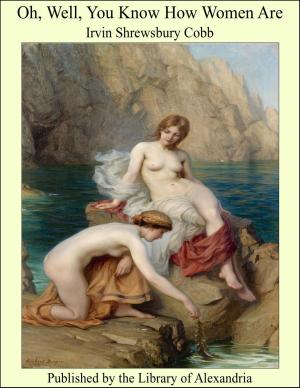The Man in Black: An Historical Novel of the Days of Queen Anne
Nonfiction, Religion & Spirituality, New Age, History, Fiction & Literature| Author: | George Payne Rainsford James | ISBN: | 9781465607317 |
| Publisher: | Library of Alexandria | Publication: | March 8, 2015 |
| Imprint: | Language: | English |
| Author: | George Payne Rainsford James |
| ISBN: | 9781465607317 |
| Publisher: | Library of Alexandria |
| Publication: | March 8, 2015 |
| Imprint: | |
| Language: | English |
Let me take you into an old-fashioned country house, built by architects of the early reign of James the First. It had all the peculiarities--I might almost say the oddities--of that particular epoch in the building art. Chimneys innumerable had it. Heaven only knows what rooms they ventilated; but their name must have been legion. The windows were not fewer in number, and much more irregular: for the chimneys were gathered together in some sort of symmetrical arrangement, while the windows were scattered all over the various faces of the building, with no apparent arrangement at all. Heaven knows, also, what rooms they lighted, or were intended to light, for they very little served the purpose, being narrow, and obstructed by the stone mullions of the Elizabethan age. Each, too, had its label of stone superincumbent, and projecting from the brick-work, which might leave the period of construction somewhat doubtful--but the gables decided the fact. They, too, were manifold; for although the house had been built all at once, it seemed, nevertheless, to have been erected in detached masses, and joined together as best the builder could; so that there were no less than six gables, turning north, south, east, and west, with four right angles, and flat walls between them. These gables were surmounted--topped, as it were, by a triangular wall, somewhat higher than the acute roof, and this wall was constructed with a row of steps, coped with freestone, on either side of the ascent, as if the architect had fancied that some man or statue would, one day or another, have to climb up to the top of the pyramid, and take his place upon the crowning stone. It was a gloomy old edifice: the bricks had become discolored; the livery of age, yellow and gray lichen, was upon it; daws hovered round the chimney tops; rooks passed cawing over it, on the way to their conventicle hard by; no swallow built under the eaves; and the trees, as if repelled by its stern, cold aspect, retreated from it on three sides, leaving it alone on its own flat ground, like a moody man amidst a gay society. On the fourth side, indeed, an avenue--that is to say, two rows of old elms--crept cautiously up to it in a winding and sinuous course, as if afraid of approaching too rapidly; and at the distance of some five or six hundred yards, clumps of old trees, beeches, and ever-green oaks, and things of sombre foliage, dotted the park, only enlivened by here and there a herd of deer. Now and then, a milk-maid, a country woman going to church or market, a peasant, or at game-keeper, might be seen traversing the dry brown expanse of grass, and but rarely deviating from a beaten path, which led from one stile over the path wall to another. It was all sombre and monotonous: the very spirit of dulness seemed to hang over it; and the clouds themselves--the rapid sportive clouds, free denizens of the sky, and playmates of the wind and sunbeam--appeared to grow dull and tardy, as they passed across the wide space open to the view, and to proceed with awe and gravity, like timid youth in the presence of stern old age.
Let me take you into an old-fashioned country house, built by architects of the early reign of James the First. It had all the peculiarities--I might almost say the oddities--of that particular epoch in the building art. Chimneys innumerable had it. Heaven only knows what rooms they ventilated; but their name must have been legion. The windows were not fewer in number, and much more irregular: for the chimneys were gathered together in some sort of symmetrical arrangement, while the windows were scattered all over the various faces of the building, with no apparent arrangement at all. Heaven knows, also, what rooms they lighted, or were intended to light, for they very little served the purpose, being narrow, and obstructed by the stone mullions of the Elizabethan age. Each, too, had its label of stone superincumbent, and projecting from the brick-work, which might leave the period of construction somewhat doubtful--but the gables decided the fact. They, too, were manifold; for although the house had been built all at once, it seemed, nevertheless, to have been erected in detached masses, and joined together as best the builder could; so that there were no less than six gables, turning north, south, east, and west, with four right angles, and flat walls between them. These gables were surmounted--topped, as it were, by a triangular wall, somewhat higher than the acute roof, and this wall was constructed with a row of steps, coped with freestone, on either side of the ascent, as if the architect had fancied that some man or statue would, one day or another, have to climb up to the top of the pyramid, and take his place upon the crowning stone. It was a gloomy old edifice: the bricks had become discolored; the livery of age, yellow and gray lichen, was upon it; daws hovered round the chimney tops; rooks passed cawing over it, on the way to their conventicle hard by; no swallow built under the eaves; and the trees, as if repelled by its stern, cold aspect, retreated from it on three sides, leaving it alone on its own flat ground, like a moody man amidst a gay society. On the fourth side, indeed, an avenue--that is to say, two rows of old elms--crept cautiously up to it in a winding and sinuous course, as if afraid of approaching too rapidly; and at the distance of some five or six hundred yards, clumps of old trees, beeches, and ever-green oaks, and things of sombre foliage, dotted the park, only enlivened by here and there a herd of deer. Now and then, a milk-maid, a country woman going to church or market, a peasant, or at game-keeper, might be seen traversing the dry brown expanse of grass, and but rarely deviating from a beaten path, which led from one stile over the path wall to another. It was all sombre and monotonous: the very spirit of dulness seemed to hang over it; and the clouds themselves--the rapid sportive clouds, free denizens of the sky, and playmates of the wind and sunbeam--appeared to grow dull and tardy, as they passed across the wide space open to the view, and to proceed with awe and gravity, like timid youth in the presence of stern old age.















